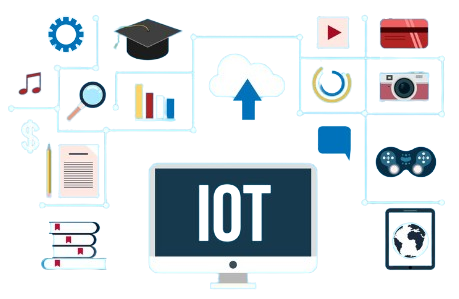Ensuring interoperability through IoT Standards and Protocols is crucial for the success of IoT initiatives. By adopting common standards and protocols, businesses can create flexible, scalable, and secure IoT networks that drive innovation and efficiency.
The Internet of Things (IoT) is rapidly transforming industries, connecting billions of devices, and creating smarter, more efficient systems. However, with the exponential growth of connected devices comes a significant challenge: ensuring that all these devices can communicate and work together seamlessly. This is where IoT Standards and Protocols play a crucial role.
Why Interoperability Matters in IoT
In a world where IoT devices range from smart home gadgets to industrial machinery, the ability of these devices to operate together without issues is vital. Interoperability ensures that devices from different manufacturers and ecosystems can share data and perform coordinated functions, creating a unified, efficient network. Without interoperability, the benefits of IoT would be severely limited, as devices would be isolated, requiring proprietary solutions and complicating integration efforts.
The Role of IoT Standards and Protocols
IoT Standards and Protocols are the building blocks that enable interoperability in IoT ecosystems. These standards define the rules and formats for data exchange, ensuring that devices, applications, and services can communicate effectively, regardless of their origin.

1. Common IoT Protocols
Several protocols have become widely adopted in the IoT industry, each serving different purposes:
- MQTT (Message Queuing Telemetry Transport): A lightweight messaging protocol designed for low-bandwidth, high-latency networks. It is widely used in IoT applications due to its efficiency and reliability in connecting devices over unstable networks.
- CoAP (Constrained Application Protocol): Designed for resource-constrained devices, CoAP is optimized for low-power IoT devices. It is particularly useful in applications where devices need to communicate in a low-energy environment, such as in sensor networks.
- HTTP/HTTPS: While not originally designed for IoT, HTTP and HTTPS are commonly used for communication between IoT devices and cloud-based services. These protocols are well-understood and supported across a wide range of devices, making them a popular choice for IoT applications.
- BLE (Bluetooth Low Energy): BLE is a wireless personal area network technology that is ideal for short-range communication between IoT devices. It is commonly used in wearable devices, smart home products, and other applications where low power consumption is critical.
2. Importance of Standards in IoT
IoT Standards and Protocols ensure that devices from different manufacturers can work together. Without common standards, IoT ecosystems would become fragmented, leading to compatibility issues and limiting the potential of IoT to transform industries.
Key IoT standards include:
- IEEE 802.15.4: This standard underpins several IoT communication protocols, including Zigbee and Thread. It is designed for low-rate wireless personal area networks. And making it ideal for IoT applications that require low power and short-range communication.
- Zigbee: Built on the IEEE 802.15.4 standard, Zigbee is a low-power, low-data-rate protocol designed for industrial and consumer applications. It is commonly used in smart home devices, such as lighting and security systems.
- Thread: Another protocol based on IEEE 802.15.4, Thread is designed for low-power, secure, and scalable IoT networks. It is gaining popularity in smart home applications due to its reliability and ease of use.
- LoRaWAN (Long Range Wide Area Network): LoRaWAN is a protocol designed for long-range communication with low power consumption. Applications such as remote monitoring and asset tracking use it, where devices need to communicate over long distances without frequent battery replacements.
Challenges in Achieving Interoperability
While IoT Standards and Protocols provide a foundation for interoperability, achieving seamless communication between devices is not without challenges:
- Diverse Ecosystems: With so many manufacturers and developers working in the IoT space, ensuring that devices from different ecosystems can work together is a complex task. Each device may support different protocols and standards, leading to compatibility issues.
- Security Concerns: As more devices connect to the IoT, ensuring that they can communicate securely is paramount. Implementing consistent security standards across different devices and protocols is challenging but necessary to protect data and prevent unauthorized access.
- Scalability: As IoT networks grow, ensuring that all devices can communicate effectively becomes more difficult. Scalability requires robust protocols that can handle increasing numbers of devices without compromising performance.
The Path Forward
To overcome these challenges and unlock the full potential of IoT, the industry must continue to develop and adopt IoT Standards and Protocols that prioritize interoperability. Collaboration between manufacturers, developers, and standards organizations is essential to creating a cohesive IoT ecosystem that benefits all stakeholders.
Conclusion
In conclusion, ensuring interoperability through IoT Standards and Protocols is crucial for the success of IoT initiatives. By adopting common standards and protocols, businesses can create flexible, scalable, and secure IoT networks that drive innovation and efficiency.
For companies looking to navigate the complex landscape of IoT, tanbits offers comprehensive IoT services tailored to your needs.
As the IoT industry continues to evolve, the focus on interoperability will only grow stronger. By prioritizing IoT Standards and Protocols, businesses can ensure that their IoT investments deliver maximum value, enabling them to stay ahead in an increasingly connected world.
BACK










